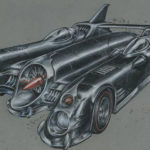The LEGO Group launches the first sustainable bricks
The LEGO Group will introduce the first elements this year that have been manufactured in a sustainable way.
As part of a long term drive to reduce the negative environmental impact of the company, the LEGO Group will introduce sustainable elements this year. Appropriately, the first LEGO elements manufactured using sustainable methods with be plant elements – including leaves, bushes and trees. The new pieces will be manufactured from plant-based sugarcane plastic, with the promise that the pieces live up to the same standard as the traditional versions.
Here is the full press release:
LEGO® botanical elements such as leaves, bushes and trees will be made from plant-based plastic sourced from sugarcane in the future and will appear in LEGO boxes already in 2018.
Production has started on a range of sustainable LEGO® elements made from plant-based plastic sourced from sugarcane. The new sustainable LEGO ‘botanical’ elements will come in varieties including leaves, bushes and trees.
“At the LEGO Group we want to make a positive impact on the world around us, and are working hard to make great play products for children using sustainable materials. We are proud that the first LEGO elements made from sustainably sourced plastic are in production and will be in LEGO boxes this year. This is a great first step in our ambitious commitment of making all LEGO bricks using sustainable materials,” said Tim Brooks, Vice President, Environmental Responsibility at the LEGO Group.
The move is part of the LEGO Group’s commitment to use sustainable materials in core products and packaging by 2030.
Uncompromised quality and safety
The new sustainable LEGO elements are made from polyethylene, which is a soft, durable and flexible plastic, and while they are based on sugar-cane material, they are technically identical to those produced using conventional plastic. The elements have been tested to ensure the plant-based plastic meets the high standards for quality and safety that the LEGO Group has, and consumers expect from LEGO products.
“LEGO products have always been about providing high quality play experiences giving every child the chance to shape their own world through inventive play. Children and parents will not notice any difference in the quality or appearance of the new elements, because plant-based polyethylene has the same properties as conventional polyethylene,” said Tim Brooks.
The unique LEGO brick design, and the LEGO Group’s uncompromised focus on quality and safety during the past 60 years ensures that two LEGO bricks produced decades apart can still fit together. As the LEGO Group is working towards using sustainable materials in its core products and packaging, it will remain strongly rooted and driven by the uncompromised focus on high product quality and safety.
Building children’s future one brick at a time
The LEGO Group has partnered with WWF to support and build demand for sustainably sourced plastic, and has joined the Bioplastic Feedstock Alliance (BFA), an initiative of WWF, to secure fully sustainable sourcing of raw material for the bioplastics industry. The plant based plastic used to make the botanical LEGO elements is certified by the Bonsucro Chain of Custody standard for responsibly sourced sugarcane. Read more here.
“It is essential that companies in each industry find ways to responsibly source their product materials and help ensure a future where people, nature, and the economy thrive,” said Alix Grabowski, a senior program officer at WWF. “The LEGO Group’s decision to pursue sustainably sourced bio-based plastics represents an incredible opportunity to reduce dependence on finite resources, and their work with the Bioplastic Feedstock Alliance will allow them to connect with other companies to continue to think creatively about sustainability.”









